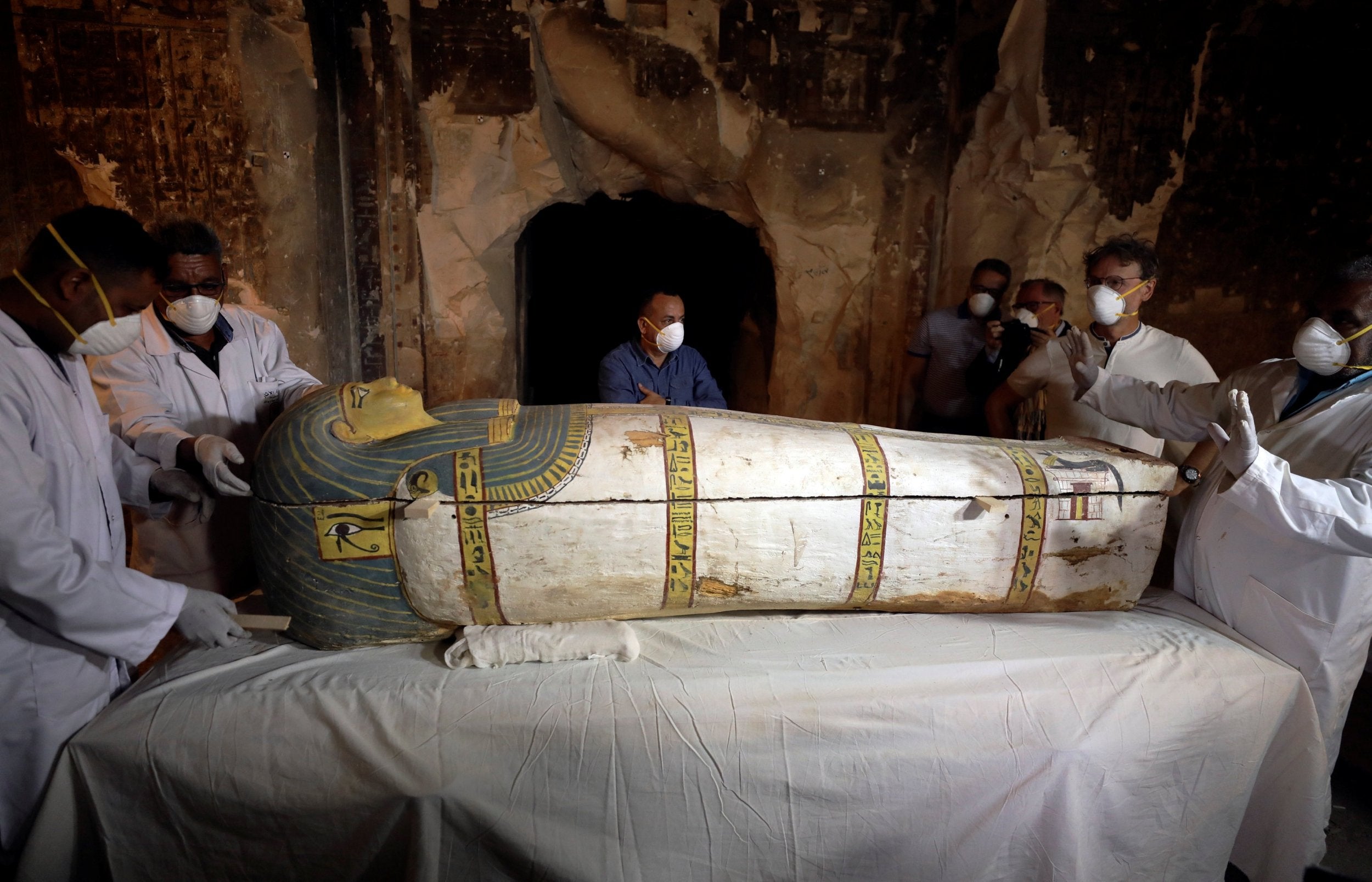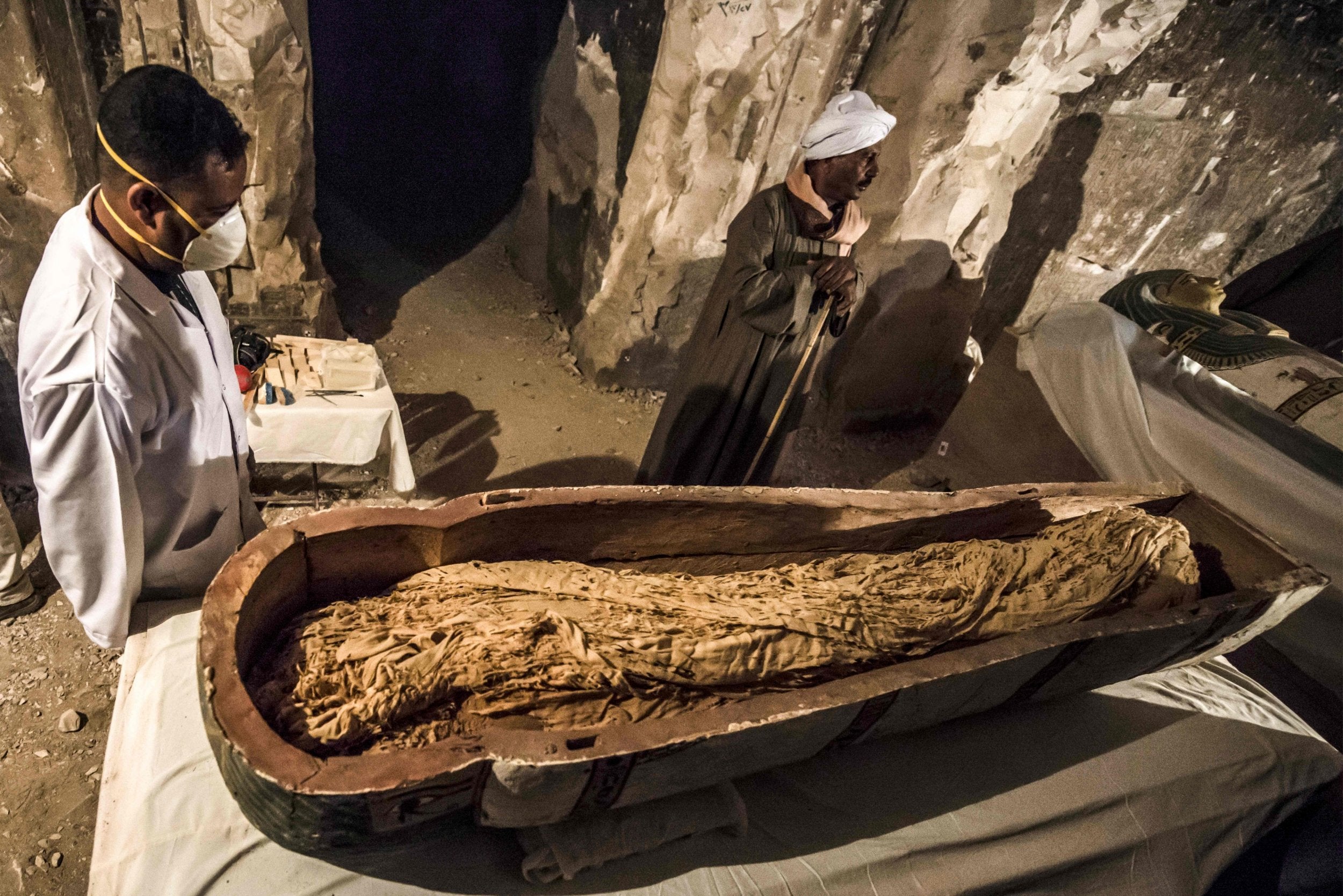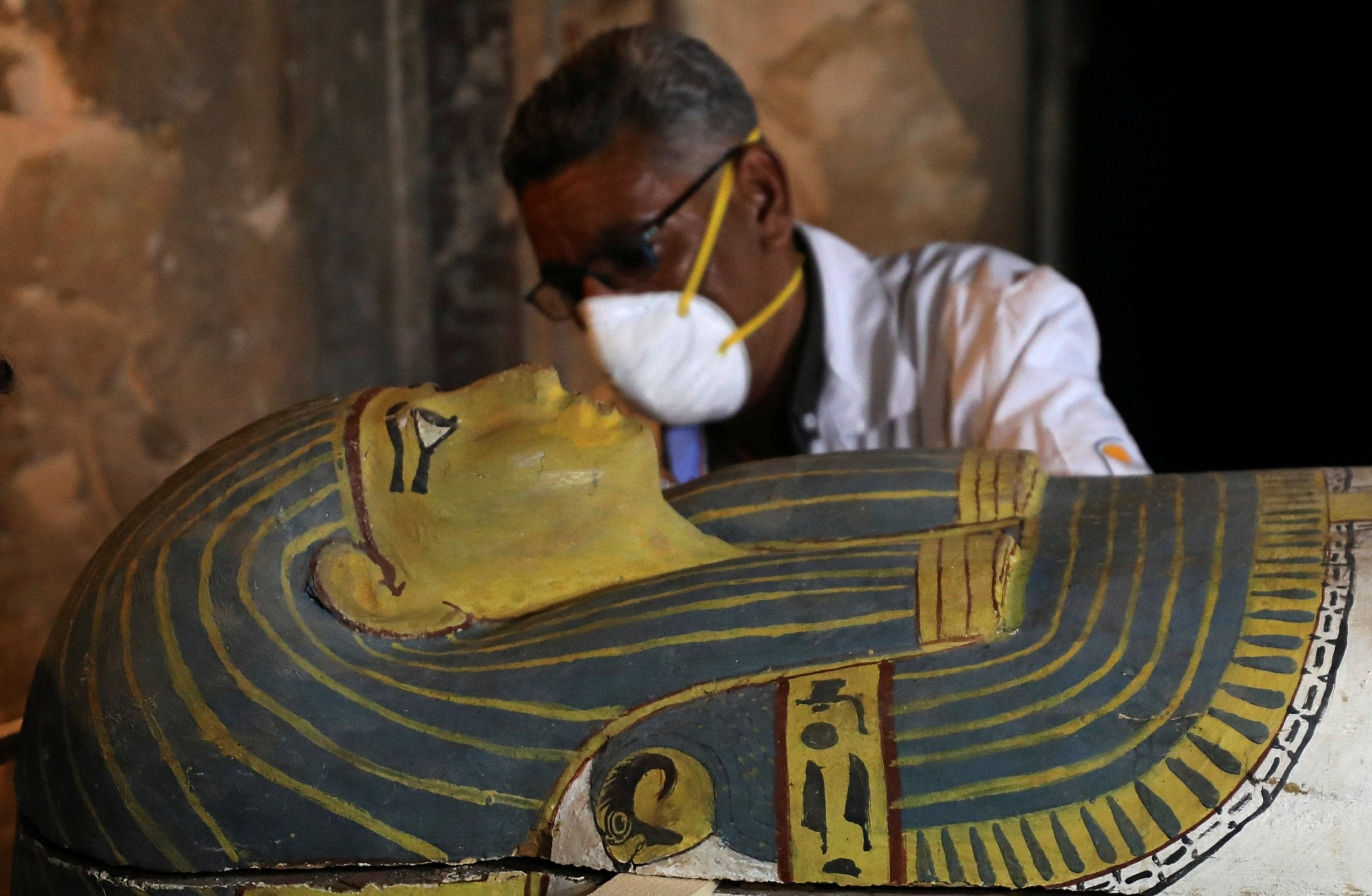Sarcophagus is one two found in burial site of nobles and senior officials close to the pharaohs on western bank of the Nile
 Archaeologists remove the cover of an intact sarcophagus inside a tomb in Luxor, Egypt (Reuters)
Archaeologists remove the cover of an intact sarcophagus inside a tomb in Luxor, Egypt (Reuters)
I would like to be emailed about offers, events and updates from The Independent. Read our privacy notice
A well-preserved mummy of a woman inside an unopened coffin dating back more than 3,000 years has been unveiled in the southern Egyptian city of Luxor.
The sarcophagus was one of two found earlier this month by a French-led mission in the northern area of El-Asasef necropolis on the western bank of the Nile.
The first one had been opened earlier and examined by Egyptian antiquities officials, but the unveiling of the second on Saturday was the first time authorities had opened a previously unopened sarcophagus before international media.
 Egyptian workers and archaeologists examine the opened intact sarcophagus (AFP/Getty) (AFP/Getty Images)
Egyptian workers and archaeologists examine the opened intact sarcophagus (AFP/Getty) (AFP/Getty Images)
Egypt’s minister of antiquities, Khaled Al Anani, said: “One sarcophagus was rishi-style, which dates back to the 17th dynasty, while the other sarcophagus was from the 18th dynasty.
“The two tombs were present with their mummies inside.”
The 18th dynasty dates back to the 13th century BC, a period noted for some of the most well-known pharaohs, including Tutankhamen and Ramses II.
 Three hundred cubic meters of rubble were removed over five months to uncover the tomb (Reuters/Mohamed Abd El Ghany)
Three hundred cubic meters of rubble were removed over five months to uncover the tomb (Reuters/Mohamed Abd El Ghany)
Located between the royal tombs at the Valley of the Queens and the Valley of the Kings, the El-Asasef necropolis is the burial site of nobles and senior officials close to the pharaohs.
The tomb belonged to Thaw-Irkhet-If, the mummification supervisor at the Temple of Mut in Karnak, according to the ministry.
Among the finds in the tomb were five coloured masks and around 1,000 Ushabti statutes – the miniature figurine of servants to serve the dead in the afterlife.
Support free-thinking journalism and attend Independent events
Three hundred cubic meters of rubble were removed over five months to uncover the tomb, which contained coloured ceiling paintings depicting the owner and his family.
Egypt has revealed over a dozen ancient discoveries since the beginning of this year. The country hopes these discoveries will brighten its image abroad and revive interest among travellers who once flocked to its iconic pharaonic temples and pyramids but who have shunned the country since its 2011 political uprising.





